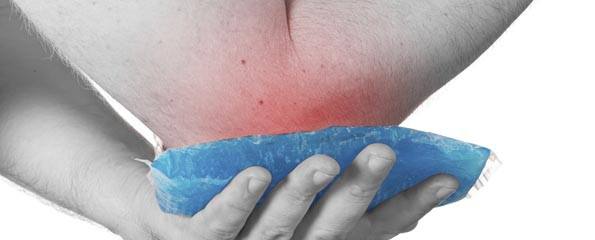Tennis elbow treatments ineffective
Among patients with chronic unilateral lateral epicondylalgia (“tennis elbow”), a single injection of corticosteroid medication was associated with poorer outcomes after one year and higher recurrence rates compared with placebo, while eight weeks of physiotherapy did not significantly improve long-term outcomes, according to a study appearing in the February 6 issue of JAMA.
“Use of corticosteroid injections to treat lateral epicondylalgia is increasingly discouraged, partly because evidence of long-term efficacy has not been found, and due to high recurrence rates,” according to background information in the article. Combining corticosteroid injection with physiotherapy to compensate for the poor long-term outcomes of corticosteroid injections has been evaluated in only 2 small studies, and the long-term effects of combining these therapies are not known.
Brooke K. Coombes, Ph.D., of the University of Queensland, St. Lucia, Australia, and colleagues conducted a study to evaluate the effectiveness of corticosteroid injection, multimodal physiotherapy, or both in 165 patients with unilateral lateral epicondylalgia of longer than 6 weeks’ duration. The patients were enrolled between July 2008 and May 2010; 1-year follow-up was completed in May 2011. Patients were randomised to either corticosteroid injection (n = 43), placebo injection (n = 41), corticosteroid injection plus physiotherapy (n = 40), or placebo injection plus physiotherapy (n = 41). The 2 primary outcomes were 1-year global rating of change scores for complete recovery or much improvement and 1-year recurrence (defined as complete recovery or much improvement at 4 or 8 weeks, but not later) analysed on an intention-to-treat basis. Secondary outcomes included complete recovery or much improvement at 4 and 26 weeks.
The researchers found that corticosteroid injection demonstrated lower complete recovery or much improvement at 1 year compared with placebo injection (83 percent vs. 96 percent) and greater recurrence (54 percent vs. 12 percent). There were no differences between physiotherapy and no physiotherapy at 1 year for complete recovery or much improvement (91 percent vs. 88 percent) or recurrence (29 percent vs. 38 percent).
There were no significant interaction effects at 26 weeks. The corticosteroid injection demonstrated lower complete recovery or much improvement compared with the placebo injection (55 percent vs. 85 percent). Physiotherapy compared with no physiotherapy demonstrated no effects on the outcomes of complete recovery or much improvement (71 percent vs. 69 percent), and with no significant differences on measures of worst pain; resting pain; pain and disability; and quality of life.
“At 4 weeks, there was a significant interaction between corticosteroid injection and physiotherapy, whereby patients receiving the placebo injection plus physiotherapy had greater complete recovery or much improvement vs. no physiotherapy (39 percent vs. 10 percent, respectively). However, there was no difference between patients receiving the corticosteroid injection plus physiotherapy vs. corticosteroid alone (68 percent vs. 71 percent, respectively),” the authors write.
“Contrary to our hypothesis and to a generally held clinical view, we found that multimodal physiotherapy provided no beneficial long-term effect on complete recovery or much improvement, recurrence, pain, disability, or quality of life, thereby not supporting the hypothesis that the combined approach is superior. However, physiotherapy should not be dismissed altogether because in the absence of the corticosteroid, it provided short-term benefit across all outcomes, as well as the lowest recurrence rates (4.9 percent) and 100 percent complete recovery or much improvement at 1 year.”
(Source: For the Media: JAMA)
Dates
Tags
Created by:

 Login
Login














